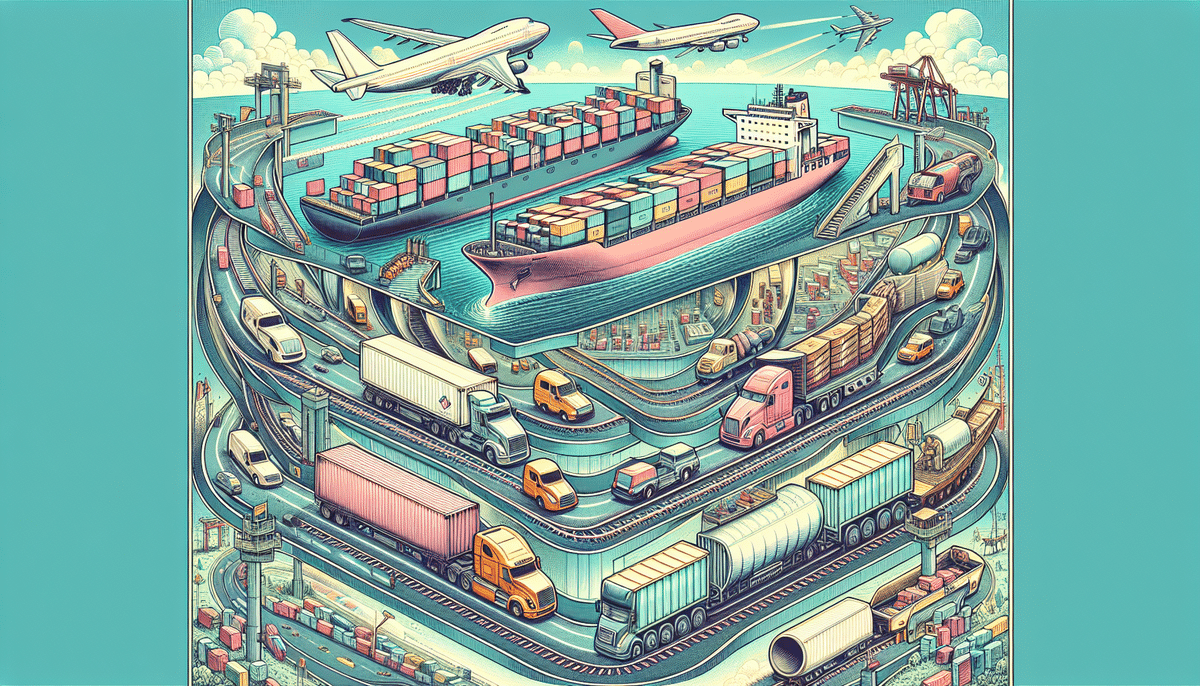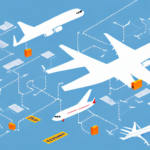Understanding the Basics of Waybills
If you’re involved in the shipping or transportation industry, then you’ve probably heard the term “waybill” before. But do you really understand what a waybill is and why it’s so important? In this article, we’ll take a deep dive into the world of waybills and explore everything from their history to their legal requirements and beyond. By the end, you’ll have a comprehensive understanding of this essential shipping document.
What is a Waybill and Why is it Important?
A waybill is a document that accompanies a shipment of goods and contains important information about the contents of the package, the recipient’s details, and the route the shipment will take to reach its final destination. Essentially, it’s a shipping label that provides crucial information to all parties involved in the transportation of the goods.
The importance of a waybill cannot be overstated. It serves as a contract between the shipper and the carrier, outlining the responsibilities of each party and ensuring that everyone is aware of the details of the shipment. Additionally, it provides proof of shipment and delivery, which is critical in case of disputes or insurance claims.
Another important aspect of a waybill is that it helps to streamline the shipping process. By providing all the necessary information in one document, it reduces the likelihood of errors or delays in transit. This is especially important for time-sensitive shipments, such as perishable goods or medical supplies.
Furthermore, waybills can also be used to track the progress of a shipment. Many carriers offer online tracking services that allow shippers and recipients to monitor the status of their packages in real-time. This can provide peace of mind and help to ensure that the shipment arrives on time and in good condition.
The History of Waybills and their Evolution Over the Years
The use of waybills dates back to the early days of shipping and transportation. Historically, they were handwritten documents that accompanied carts and wagons carrying goods from one place to another. As the transportation industry evolved over the years, so too did the waybill.
Towards the end of the 19th century, railways became the primary mode of transportation for goods, and pre-printed waybills became standard practice. These documents were filled out by hand and provided critical information such as the shipper’s name and address, the type of goods being shipped, and the destination.
With the advent of computers and the internet, electronic waybills have become increasingly prevalent in recent years. These digital documents offer a number of advantages over their paper counterparts, including faster processing times and increased accuracy.
Today, many companies use automated systems to generate and manage waybills. These systems can integrate with other logistics software to provide real-time tracking and updates on the status of shipments. Additionally, electronic waybills can be easily shared between different parties involved in the shipping process, reducing the need for physical copies and streamlining communication.
Different Types of Waybills: Which One is Right for You?
There are several different types of waybills, depending on the specific needs of the shipper and the transportation company. Some of the most common types include:
- Sea Waybills
- Air Waybills
- Inland Waybills
Choosing the right type of waybill will depend on a number of factors, including the destination of the shipment, the type of goods being shipped, and the regulations governing the transportation company.
How to Correctly Fill Out a Waybill: A Step by Step Guide
Correctly filling out a waybill is critical to ensuring the safe and timely delivery of your goods. Here’s a step-by-step guide to help you through the process:
- Enter the shipper’s name and address.
- Provide the recipient’s details.
- Describe the contents of the shipment.
- Specify the destination.
- Include any special instructions.
- Double-check for accuracy.
Common Mistakes to Avoid When Filling Out a Waybill
While filling out a waybill may seem straightforward, there are several common mistakes that can lead to delays or even lost shipments. Here are some mistakes to avoid:
- Incorrect or incomplete addresses.
- Misspelled names or incorrect details.
- Failure to provide proper documentation.
By taking the time to carefully fill out your waybill and double-checking for errors, you can help ensure a smooth and successful shipment.
Tips for Ensuring Accuracy in Your Waybills
Accurate waybills are essential for the smooth functioning of the shipping industry. Here are some tips to ensure that your waybills are as accurate as possible:
- Use automated systems for efficiency.
- Double-check all entered information.
- Stay updated with regulatory changes.
The Role of Waybills in Supply Chain Management
In addition to their role in the transportation of goods, waybills play an important role in supply chain management. By providing detailed information about shipments, they allow companies to track inventory and ensure that products are delivered on time and in the correct quantity.
Waybills can also be used to identify patterns and trends in shipping data, which can help logistics managers make more informed decisions about inventory levels, transportation routes, and supplier relationships. In this way, waybills are an essential tool for optimizing supply chain operations and reducing costs.
How Waybills Help Reduce Shipping Errors and Delays
Errors and delays in shipping can be costly for both shippers and carriers. Waybills help mitigate these risks by providing a clear and detailed record of the shipment, which can help to avoid confusion and ensure that everyone involved has the information they need to do their job properly.
In addition, accurate waybills can help to speed up processing times at customs and other checkpoints, reducing the risk of delays. By making sure that your waybills are as accurate and detailed as possible, you can help ensure a smooth and timely delivery for your goods.
The Legal Requirements of Waybills and Why They Matter
Waybills are subject to a range of legal requirements, depending on the destination, type of goods, and transportation method. Failure to comply with these requirements can result in fines or even legal action. Some of the legal requirements that may apply to waybills include:
- Customs declarations.
- Compliance with local regulations.
- Proper documentation for hazardous materials.
It’s important to familiarize yourself with the legal requirements of waybills before shipping any goods to ensure compliance and avoid any legal issues down the line.
Understanding the Relationship Between Waybills and Invoices
Waybills and invoices are closely related and often used interchangeably in the shipping industry. While waybills primarily provide information about the shipment itself, invoices provide information about the costs associated with the shipment, including the price of the goods being shipped, taxes, and shipping fees.
Both documents are critical for the smooth functioning of the shipping and transportation industries, and careful attention should be paid to both to ensure accuracy and compliance with all regulations.
How Electronic Waybills Are Changing the Shipping Industry
Electronic waybills are becoming increasingly prevalent in the shipping industry, offering a number of advantages over traditional paper waybills. One of the primary benefits of electronic waybills is their speed and efficiency. They can be completed and processed much faster than paper waybills, reducing processing times and increasing efficiency.
Electronic waybills are also more accurate than their paper counterparts, with less chance of errors due to illegible handwriting or lost paperwork. Finally, electronic waybills are more environmentally friendly, reducing the need for paper and ink and helping companies to reduce their carbon footprint.
Comparing Paper vs Electronic Waybills: Pros and Cons
While electronic waybills offer many benefits over paper waybills, there are also some potential drawbacks to consider. Here’s a quick breakdown of the pros and cons of each:
Paper Waybills:
- Familiar and widely accepted.
- No need for electronic systems.
- Physical copy for records.
Electronic Waybills:
- Faster processing times.
- Increased accuracy.
- Environmentally friendly.
Ultimately, the decision of whether to use paper or electronic waybills will depend on the specific needs and requirements of your business.
Best Practices for Managing Your Waybill Records
Proper management of your waybill records is critical to ensuring the smooth functioning of your business and reducing the risk of lost or delayed shipments. Here are some best practices to follow:
- Implement digital record-keeping.
- Regularly audit waybill records.
- Train staff on accurate waybill creation.
Future Trends in the Use of Waybills in Logistics and Transportation
As technology continues to advance and the logistics and transportation industries evolve, we can expect to see even more changes in the way waybills are used and processed. Some potential trends include:
- Increased use of blockchain technology.
- Enhanced real-time tracking capabilities.
- Greater integration with supply chain software.
By staying up to date with these trends and embracing new technologies where appropriate, businesses can help ensure that their shipping processes remain efficient, accurate, and cost-effective.
Conclusion
Waybills are an essential part of the shipping and transportation industry, providing critical information about shipments and helping to ensure that goods are delivered safely and on time. By understanding the basics of waybills, including their history, types, and legal requirements, companies can help ensure that their shipments are both successful and compliant with all relevant regulations.
As the industry continues to evolve, it’s important for businesses to stay up to date with the latest technologies and trends in waybill processing and management. By doing so, they can stay ahead of the competition and ensure that their supply chain operations remain efficient, effective, and cost-effective.






















